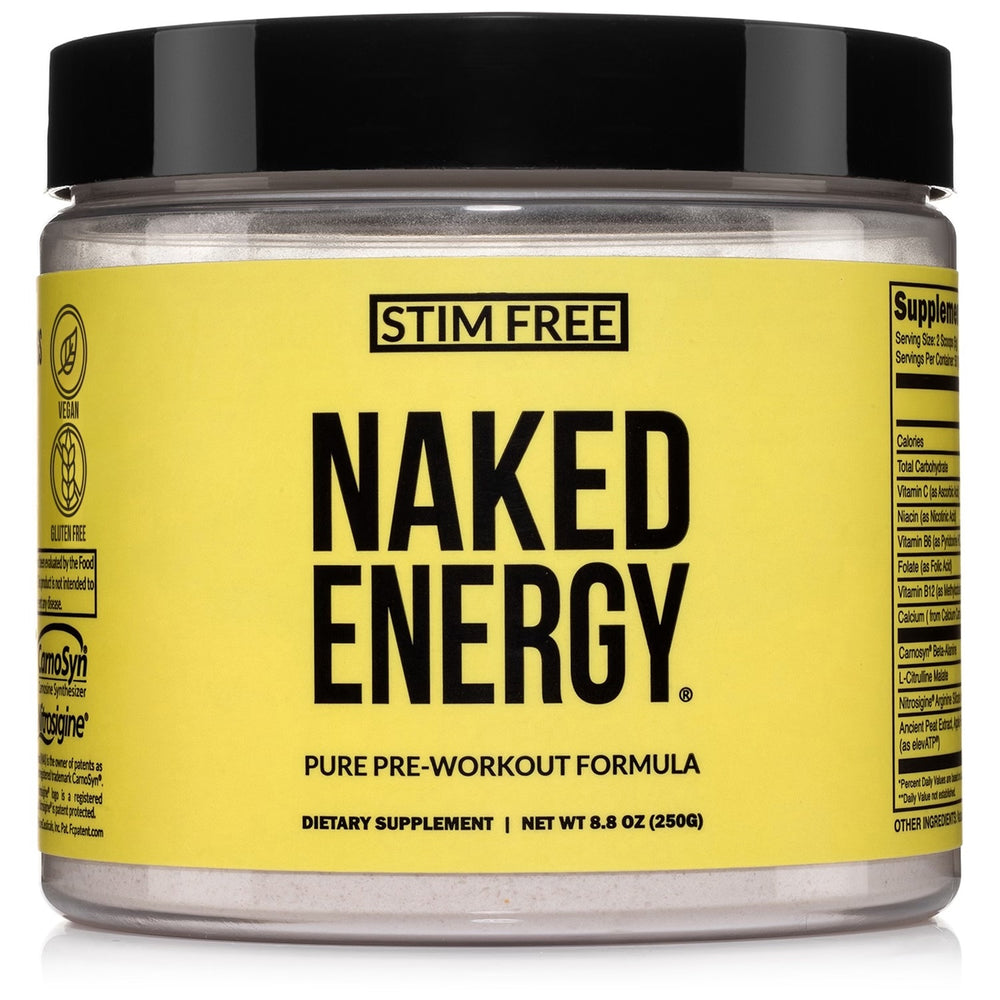If you're getting started with creatine, smart move!
Creatine is one of the most heavily researched ergogenic aids out there with a wide range of proven performance benefits.
You might have come across the phrase “creatine loading” when searching for how to get started with this supplement.
Look no further because this article breaks down how the creatine loading phase works and how you add this supplement to your routine in the most strategic way.
How Creatine Works
First, let's firm up your background knowledge with exactly how creatine monohydrate (or other creatine supplements) works in the body.
Your muscles are already packed with creatine - specifically, a molecule called phosphocreatine. Throughout a workout, phosphocreatine helps turn stored energy (ADP) into an active form of energy (ATP) that our muscles can actually use.
During intense workouts, muscle creatine levels start to deplete and the body cannot continue transforming energy as effectively.
By taking creatine supplements, the goal is to make more creatine available for helping with energy conversion.
More muscle creatine stores translate into more energy usage in our muscles, which in turn yields the performance benefits of creatine supplements.
Creatine is safe and accepted by the NCAA, International Olympic Committee, and Professional Sports.
We actually naturally get about 1-2 grams of creatine daily from our food - so even if you feel “new” to the world of taking creatine, your body probably isn't.
What are the Main Benefits of Creatine Supplementation
Increased Muscle Strength
One of the biggest benefits of creatine is increased muscle mass and strength, which can lead to improved performance in activities that require strength and power, such as weightlifting, sprinting, and jumping.
Improved Exercise Capacity
Creatine supplementation can also improve exercise capacity by increasing the availability of energy in the muscles.
This can lead to improved performance during high-intensity exercise, as well as a reduced sense of fatigue.
Enhanced Muscle Recovery
Muscle recovery is another key benefit of creatine supplementation by increasing the rate at which the muscles can resynthesize ATP, the primary energy source for muscle contractions.
Creatine can lead to less muscle soreness and faster recovery between workouts.

Increased Muscle Mass
Along with strength and recovery, creatine supplementation can also lead to an increase in muscle mass, which in itself has plenty of health benefits beyond just aesthetics.
Neuroprotective Effects
Creatine isn't just about athletic performance and muscle mass.
Creatine supplementation has been shown to have neuroprotective effects, which means it can help to protect the brain and improve cognitive function.
Benefits of a Creatine Loading Phase
While muscle tissue naturally contains creatine stores, it's not fully saturated.
The purpose of a creatine loading phase is to gradually “load” creatine into the muscles to help increase these stores to be as high as possible.
If you eat a typical diet, your muscles are already about 60-80% saturated with creatine.
Because dietary creatine typically comes from animal proteins like meat and seafood, vegetarians and vegans tend to have lower creatine stores (but good news for plant-based eaters: that means that they're also able to better retain supplemental creatine).
By going through a creatine loading phase, you'll be able to quickly elevate creatine stores above that 60-80% threshold so that you can start using more energy in your muscles - and therefore, seeing better performance in the gym.

How to Load Creatine
During the loading phase creatine supplementation is at a much higher daily dose than usual to help boost how much of it is stored in muscle.
The International Society of Sports Nutrition explains that there are two main methods: a faster creatine loading phase and a slower one.
Let's take a look at each type of loading phase when it comes to creatine supplementation:
Faster Method of Loading Creatine - 1 Week
The International Society of Sports Nutrition suggests that the fastest and most effective creatine loading phase is to take 5 grams of creatine monohydrate four times daily for 5–7 days.
This means taking 20 grams of creatine total per day for about 1 week when loading creatine.
Alternatively, you can take 0.3 g of creatine per kilogram of your body weight daily for 5-7 days to increase your intramuscular creatine stores.
This totals 20 grams daily if you weigh about 68 kg (or 150 lb).
If you weigh significantly more or less than 150 lb, using this method may help you more accurately estimate how much creatine suits your body.
Slower Creatine Loading Method - 1 Month
For a more gradual approach, you can take 3 grams of creatine daily for 28 days.
While this method leads to slower results, it's still ultimately effective and may be a better fit for people who do not want to take too much creatine at once.
Is Creatine Loading Safe?

In general, a creatine loading phase is safe for most healthy individuals.
But it is always best to consult with a physician before starting any type of serious supplementation.
One side effect of the loading phase that is relatively common is water retention which might cause temporary weight gain.
But rest assured that weight gain is not from body fat, assuming you haven't made significant changes to nutrition and training regimens.
Does Creatine Loading Cause Bloating?
Contrary to what some people think, in most cases, loading creatine would not cause you to feel bloated.
The weight gain you might experience would be due to your muscles holding more water, which is a different type of water retention than bloating.
In fact, your muscles retaining more water is responsible in part for the muscle mass gain and the increased stamina during intense exercise.
But if you do experience issues like bloating or GI discomfort, then maybe take a step back from the loading phase, or switch the type of creatine you're using, like monohydrate instead of hcl, for example.
How to Pair Creatine with Protein and Carbs

The research varies on exactly how much protein and/or carbohydrates are helpful to give you this boost.
One study used about 50 g of carbs plus 50 g of protein as well as 100 g of carbs alone, and found favorable results with both.
Other studies have found that 93 grams of carbs and 18 grams of protein helped with creatine muscle retention.
When it comes to picking which protein and carbs to eat with your creatine, consider what foods and supplements fit your routine best.
Protein shakes that contain both protein and carbs are a quick option if you're on the go and prefer liquids.
Alternatively, you can get plenty of carbs and protein from a food-based approach (like a turkey sandwich or a tall glass of chocolate milk).
Pairing a high-quality creatine monohydrate powder with carbohydrates and protein during the loading process probably helps your body retain it better, according to multiple studies.
Our premium grade Naked Creatine mixes easily with your drinks and is independently third-party tested for heavy metals.
Even if your creatine levels are already high, the insulin release thanks to protein and carbs' presence helps with creatine retention.
Also Read: Best Time to Take Creatine
After the Creatine Loading Phase
After the loading phase, it's assumed that your muscles have reached a saturation point. What comes next is the maintenance phase.
ISSN recommends that most people can maintain creatine stores by taking 3–5 grams per day.
If you're a larger athlete, you may need to take as much as 5–10 grams per day in order to maintain creatine stores.
How Long Until I See Results?
Once your muscles are fully “loaded” with creatine, research shows gains of 10-20% in strength performance. Benefits of creatine also include enhanced recovery, faster sprint times, increased anaerobic threshold, and increased muscle mass.
The primary benefit of the 7-day creatine loading phase is that it speeds up how quickly you'll see results.
Muscles need to be saturated with creatine in order to see gains, so a faster loading process gets you to that saturation point quicker.
Keep in mind that once you've done the loading phase, you won't continue to see extra gains by adding extra creatine.
Once muscles are fully saturated, they cannot store any additional creatine.











